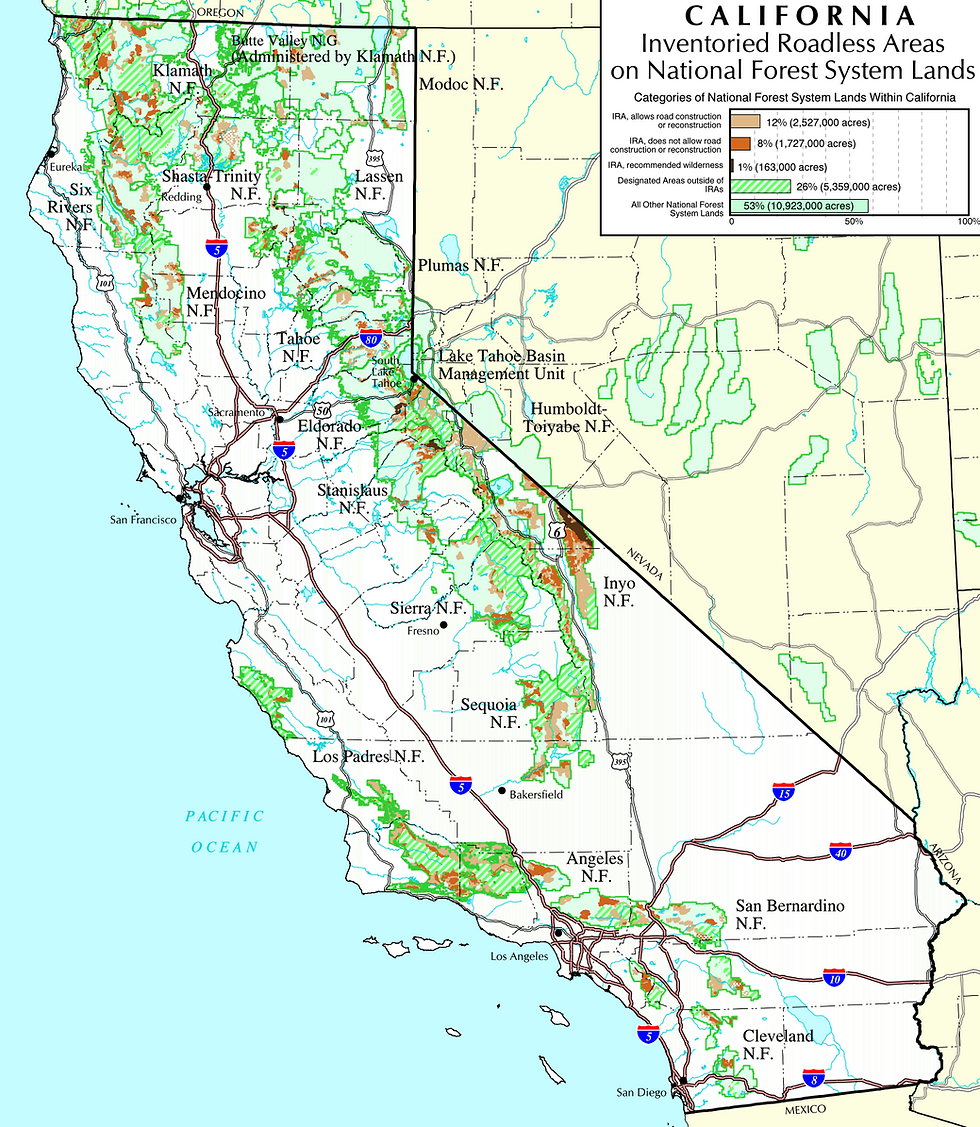EPIC Supports Economic Connectivity
- Jul 2, 2013
- 3 min read
Connectivity is one of the most important concepts related to the development of both effective conservation and viable long-term economic strategies. Over the course of our evolution as a public interest conservation advocacy organization, EPIC has worked hard to protect core natural areas, and to secure biological connectivity across the Northwest California landscape. With more than 35 years of experience in North Coast land management decision-making processes, EPIC has learned many lessons about how to successfully steer state and federal agencies, as well as large private landowners and rural residential communities, toward a landscape-scale vision for the stewardship of our forests and watersheds. What EPIC has also done over the years, and what receives less attention, is identify important opportunities to support economic development while still respecting the sensitive environments that make our region unique and a desirable place to live, work, and raise our children.
Over the course of the last several years the Northwest California region has been host to a contentious series of large-scale highway expansion projects promoted by the California Department of Transportation (Caltrans). At the same time, a parallel controversy has evolved around the persistence of certain economic interests in promoting what would prove to be very expensive and natural resource-damaging train transportation infrastructure to Humboldt Bay. As this debate goes forward, the current discourse concerning regional transportation needs fails to root itself in reality by ignoring critical infrastructure construction already underway. EPIC, based on the North Coast, and working through the five counties of Del Norte, Siskiyou, Trinity, Humboldt and Mendocino counties, has taken a very public role in questioning and challenging the purpose and need, as well as the design and quality of environmental review, of several Caltrans highway expansion projects, most notably the Richardson Grove Surface Transportation Assistance Act (STAA) project, the Willits Bypass project, and the Highway 197/199 STAA access project in the Smith River Canyon of Del Norte County. Though these Caltrans projects have resulted in high-profile lawsuits and textbook instances of environmental conflict, one of the largest and most important transportation infrastructure projects for our region is currently under construction, and is facing no opposition from our organization — and it is still largely ignored in the current debate about economic connectivity and future rail or highway development in our region.
The Buckhorn Summit project on Highway 299 is a highway-widening project intended to facilitate access between Interstate 5 and the North Coast of the largest trucks on the road today — the STAA supersized cab trucks that are so common on the national interstate highway system. EPIC has monitored and tracked the $60 million Buckhorn grade projects, just as our organization has monitored and tracked the other STAA access projects at Richardson Grove and on the Smith River. Though we have insisted in numerous comment letters and legal briefings that all the evidence proves that Caltrans must analyze the cumulative impact of their STAA highway widening projects on Highway 101, Highway 199, and Highway 299, the agency has refused to fulfill their obligation. Regardless of that failure on the part of the largest road building agency in the world to accurately and honestly disclose to the North Coast public the cumulative impacts of this region wide highway expansion project, EPIC has stood completely out of the way on the Buckhorn Summit projects.
The Buckhorn Summit projects are not without their environmental impacts — over the course of project implementation more than 2,000,000 cubic yards of earth will be moved to straighten and widen the well-known stretch of curves on Highway 299 right at the western border of Shasta County. This is no small project — but EPIC has strategically stayed out of the way of that project as a demonstration of our understanding of the importance of supporting connectivity for economic interests in Humboldt County that desire big STAA truck service for the North Coast. There is no question that the fastest most direct route for goods from the North Coast to national markets is the direct line out Highway 299 to Interstate 5 and all points north, east, and south.
The bottom line about these transportation issues is that EPIC is aware of and supporting economic connectivity, while standing true to our mission and defending the unique natural qualities of our bioregion from unnecessary, damaging, and wasteful infrastructure development projects in some of the most special places remaining to us on the North Coast, and indeed, our planet.





Comments